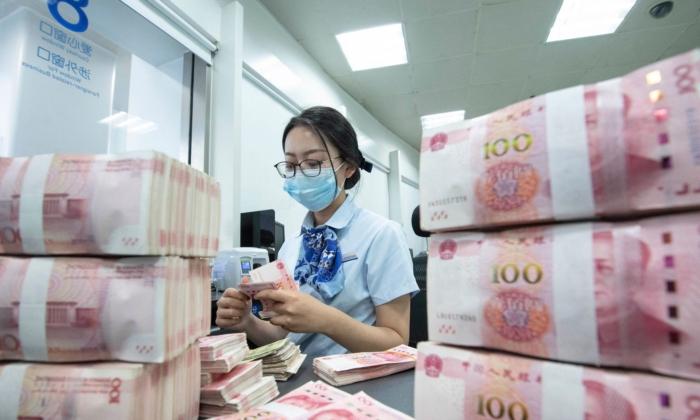The Chinese regime is hiding trillions of dollars in “shadow reserves,” according to an economist and former Obama-era Treasury Department official.
“China is so big that how it manages its economy and currency matters enormously to the world,” he said on June 29. “Yet over time, the way it manages its currency and its foreign exchange reserves has become much less transparent—creating new kinds of risks for the global economy.”
The former deputy assistant Treasury secretary for international economic analysis noted that the country’s sudden pause in its reporting activity was a key hint at the present state of China’s reserves.
From 2002 to 2012, the Chinese regime’s forex reserves steadily increased amid the People’s Bank of China’s (PBoC) acquiring U.S. dollars to prevent the yuan from appreciating too much and ensuring that exports remained cheap. However, in the past decade, the nation’s reserves ceased growing, despite a record trade surplus.
Mr. Setser, now the senior fellow for international economics at the Council on Foreign Relations, said he believes that officials are preventing data from appearing on the central bank’s balance sheet by relying on state-run banks and sovereign wealth funds.
“Just as China has ’shadow banks’—financial institutions that act like banks and take the kind of risks that a bank might normally take but aren’t regulated like banks—China has [what] might be called ’shadow reserves.' Not everything that China does in the market now shows up in the PBoC’s balance sheet,” he wrote, noting that officials use the state banking system to shield these reserves from public viewing.
Ultimately, this could turn out to be a significant problem for the global economy and pose a major risk, considering how crucial China is for the international marketplace, according to Mr. Setster.
Belt and Road Initiative
One of the chief objectives behind China’s Belt and Road Initiative (BRI)—the large-scale global infrastructure plan introduced in 2009—was to diversify its holdings in a post-financial crisis world, Mr. Setser noted. This push has turned China into a significant creditor in the international economy.“They are powerful enough of an economic force such that an entire, global, decades-long infrastructure plan was in some ways, just a side effect of a 2009 decision to find new ways to manage China’s foreign exchange,” he wrote. “Well, China is so big an economy—and such an unbalanced economy—that all its activities just have an outsized global impact.”

At the same time, it’s unclear what effects the latest developments have on Chinese foreign reserves. In the past year, Beijing has slowed down foreign lending as many impoverished borrowers continue to struggle with high interest rates and payment schedules.
The BRI has allowed the Chinese regime to put its immense foreign exchange reserves to work and achieve various aims, whether exerting influence in various regions around the country or expanding leverage over foreign governments.
Experts have noted that the diversification of the regime’s foreign reserves could make it more challenging for Western leaders to target communist China with economic and financial sanctions in the event that it invades Taiwan. If Mr. Setser’s suggestion is accurate, and $3 trillion is being hidden from the public, it would only add to that challenge should a war break out.





